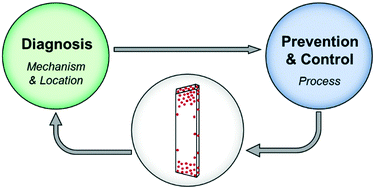Impurity incorporation in solution crystallization: diagnosis, prevention, and control
Abstract
Despite their widespread use for purification, our current methods for the development of solution crystallization processes lack a sufficient understanding on how impurities incorporate in growing crystals. This is, in part, due to the large number of mechanisms often encountered for impurity incorporation, and due to limitations in our methods for diagnosis of those mechanisms. These limitations propagate into largely empirical process development strategies, which are still based on trial and error and centered on solvent selection. This manuscript highlights recent developments in the diagnosis, prevention, and control of impurity incorporation during batch and continuous crystallization. The goal is to provide process development scientists with an updated toolkit for understanding how specific impurities are retained in the solid product, and to review recent prevention and control strategies that may be used to improve crystal purity in industrial crystallization processes.

- This article is part of the themed collections: 2022 Highlight article collection and CrystEngComm up-and-coming articles


 Please wait while we load your content...
Please wait while we load your content...